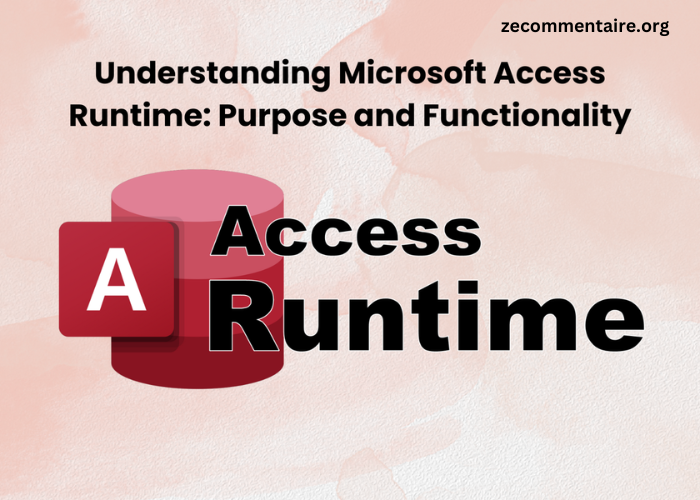Welcome to Microsoft Access, a robust database management tool that enables users to manage data effectively, optimise workflows, and boost output. The tools we use also change as technology does, and Microsoft never stops adjusting to meet the ever-changing needs of its users. In this blog, we’ll explore the function and goal of Microsoft Access Runtime.
Whether you’re an experienced expert or just starting with Microsoft Office Training Courses, mastering the ins and outs of Microsoft Access Runtime can significantly enhance your capability to manage databases.
Table of Contents
- Unveiling Microsoft Access Runtime
- Bridging Compatibility
- Ensuring Consistency
- Functionality of Microsoft Access Runtime
- Database Navigation and Interaction
- Report and Form Viewing
- Macro and Query Execution
- Enhanced Security Features
- Integration with Microsoft Office Training Courses
- Key Takeaways for Microsoft Access Runtime Users
- Accessibility for All
- Consistency in User Experience
- Seamless Functionality
- Cost-Effective Sharing
- Conclusion
Unveiling Microsoft Access Runtime
A flexible set of tools for building and maintaining databases is the foundation of Microsoft Access. But Runtime is essential for sharing these databases with other people. Suppose you have used Microsoft Access to carefully create a database you would like to share with clients or coworkers. At this point, users can interact with your database more easily and without requiring a full version of Microsoft Access, thanks to Runtime.
Bridging Compatibility
Closing the compatibility gap is one of Runtime’s primary goals. When you want other people to use the databases you’ve developed, it can be difficult because not everyone has the complete version of Microsoft Access installed on their computers. You may ensure that end users can easily interact with your database even if they do not have the full Microsoft Access software suite by using Runtime.
Ensuring Consistency
Any collaborative project must be consistent, and Runtime helps keep things that way for different users. It guarantees that all users engage with the database uniformly, removing any possibility of inconsistencies resulting from using various Microsoft Access versions.
Functionality of Microsoft Access Runtime
Now that we understand the goal let’s examine the features that Runtime offers:
Database Navigation and Interaction
Users can navigate and interact with databases using Runtime in a manner identical to that of the full edition of Microsoft Access. This ensures a smooth user experience for reading, inserting, and amending data.
Report and Form Viewing
A database’s reports and forms are essential; users can view and work with these parts without needing the full version of Microsoft Access by using Runtime. This feature is beneficial for exchanging individual insights or data visualisations.
Macro and Query Execution
Runtime guarantees the efficient execution of macros and queries within the database for users that require such functionality. This feature improves the database’s general usability for end users.
Enhanced Security Features
Besides its primary purposes, Runtime improves database security by enabling developers to add particular security measures. This entails establishing user permissions, limiting access to specific information, and guaranteeing the confidentiality of sensitive data. Thus, the runtime version gives your databases additional protection and control in addition to accessibility.
Integration with Microsoft Office Training Courses
Knowing the ins and outs of Runtime adds a crucial dimension to the skill set of those taking Microsoft Office training courses. Whether you’re studying business intelligence, data analysis, or database management, knowing how Runtime fits into the bigger picture will help you become more adept at working with databases.
Key Takeaways for Microsoft Access Runtime Users
Let’s review the main conclusions from our investigation on Runtime:
Accessibility for All
Runtime ensures that more people can access your carefully crafted databases, regardless of whether they have the complete Microsoft Access suite.
Consistency in User Experience
In collaborative projects, maintaining a consistent user experience is essential. This is made possible in part by Runtime, which offers a consistent database interaction platform.
Seamless Functionality
The features provided by Runtime, such as query execution and database navigation, enhance the overall effectiveness of database management by providing a smooth user experience.
Cost-Effective Sharing
Database sharing using Runtime is an affordable alternative to purchasing expensive software licenses. For collaborative projects, the runtime version of Microsoft Access can be used instead of needing each user to obtain a full license. This lowers total expenses.
Conclusion
Exploring Microsoft Access Runtime is crucial for anyone engaged in Office Applications Courses. This powerful tool exemplifies the company’s commitment to providing versatile database management solutions. Understanding the nuances of Runtime enhances your capacity to collaborate on databases, irrespective of your experience level or entry point into Microsoft Office training. Embracing technologies like Runtime ensures that you stay ahead in efficient and collaborative database administration as technology progresses.





